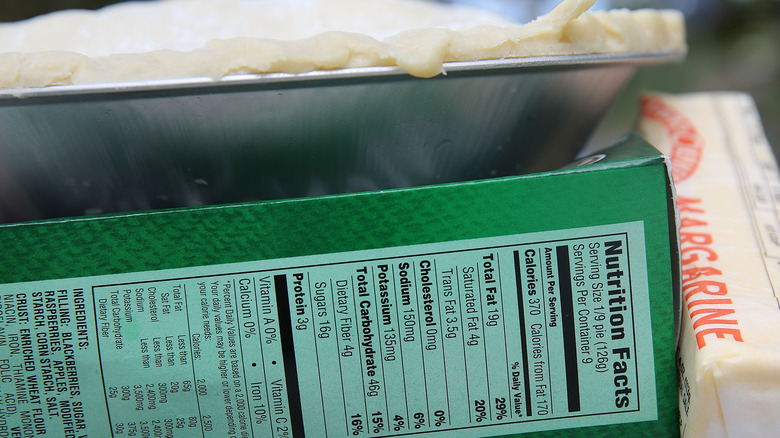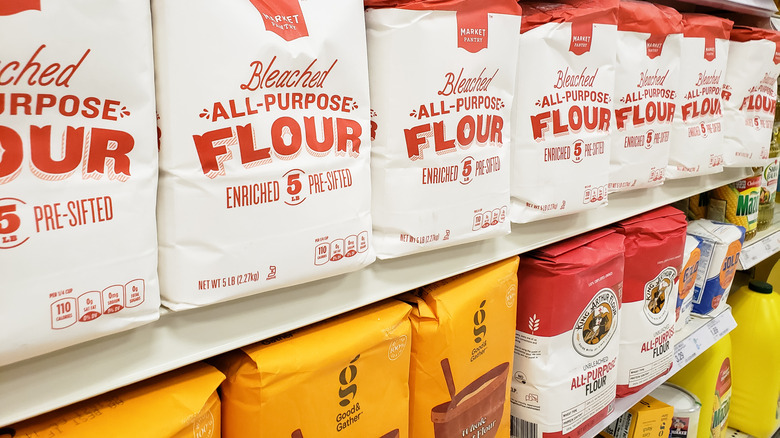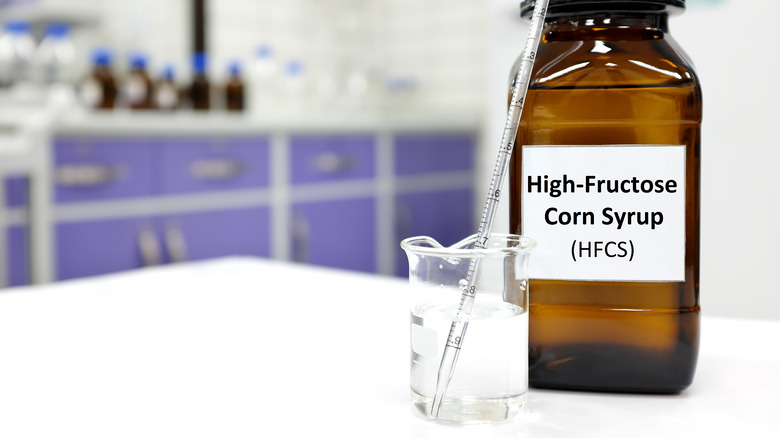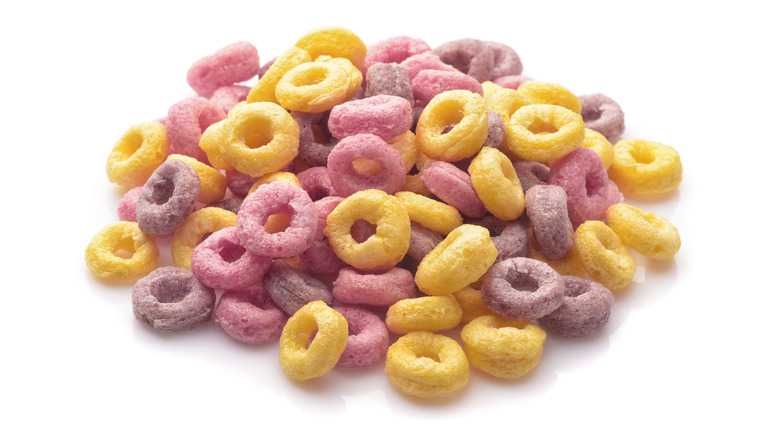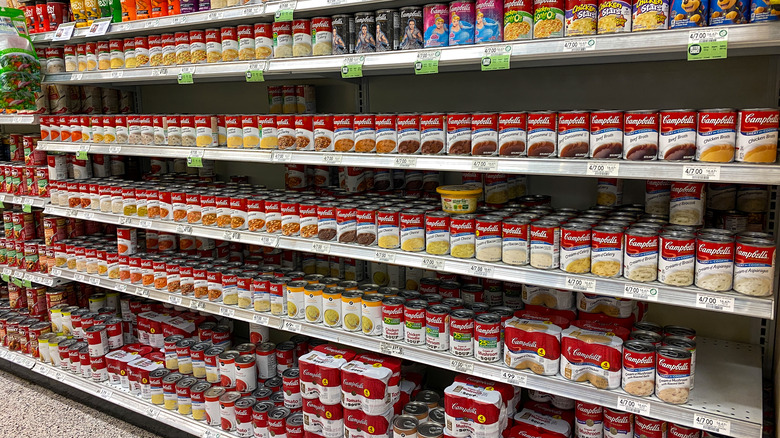The Worst Foods For Your Health, That You May Be Eating Often
Are you having trouble meeting your health goals? Is your cholesterol unusually high even though you are keeping an eye on your fat consumption, or perhaps you are experiencing unexplained weight gain despite exercising regularly? The answer could be in the food you might be eating often, as unhealthy ingredients can hide in the most healthy-looking meals. From drinks to sandwiches without forgetting breakfast foods and snacks, we are taking a close look at the worst foods for your health that could be hindering your dietary efforts and unknowingly causing preventable health issues.
The research on commonly eaten food is not only abundant, but it is also pretty clear. While there is no clear way to completely avoid certain health issues across the board, it is still possible to reduce your risk factors as much as possible by avoiding the most common dietary offenders that doctors recommend you stay clear from as much as possible.
Foods that contain trans-fatty acids
Trans fats became all the rage when saturated fats like butter were accused of promoting cardiovascular disease. But things quickly changed when the research showed that trans fatty acids, a type of fat that occurs in very small quantities in nature but never to the levels found in commonly eaten minimally processed foods, can be even more damaging to our health than any other kind of fat out there. According to a 2019 study published in the journal Diabetes and Metabolic Syndrome, a "2% absolute increase in energy intake from trans-fat has been associated with a 23% increase in cardiovascular risk." And a 2007 study from the European Journal of Clinical Nutrition found that the high intake of trans fatty acids in Iranian homes contributed "to a sizeable proportion of coronary heart disease."
Need more proof? The same journal a few years later confirmed that the consumption of trans fatty acids from partially hydrogenated oils contributed significantly to the increased risk of coronary heart disease events. If you want to keep heart attacks at bay as much as possible, skip the trans fats. While most brands have now removed trans fats from their products, you can still find them occasionally. Just be sure to look at the nutritional facts on the packaging.
Sugar-sweetened and artificially-sweetned drinks
A sweet drink on a hot summer day can be refreshing but with every sugary drink comes a higher probability of "weight gain and obesity," according to a 2014 study published in the journal Advances in Nutrition. A 2020 study published in the European Journal of Epidemiology also found that increased consumption of sugary beverages was associated with a higher risk of obesity, type II diabetes, hypertension, and all-cause mortality. And in case that wasn't enough, a 2019 study published in the peer-reviewed Circulation Journal found that sugar-sweetened beverages increased the risk of mortality through cardiovascular disease.
If too much sugar is bad for you, can you just replace it with artificial sweeteners? Not so fast. A 2015 study published in the peer-reviewed journal of the British Medical Association, The BMJ found that "both artificially sweetened beverages and fruit juice were unlikely to be healthy alternatives to sugar-sweetened beverages for the prevention of type 2 diabetes" based on their findings, and a 2020 study published in the peer-reviewed journal Nutrients found that "a diagnosis of Type 2 Diabetes was associated with increased likelihood of consuming artificially-sweetened sodas."
If you are thirsty, your best bet is to drink plain old water, or try making infused water using cucumbers, mint, lemon slices, or orange slices. Or, experiment with natural alternatives like stevia. A 2019 study published in Current Diabetes Report determined that "natural alternative sweeteners may reduce hyperglycemia, improve lipid metabolism, and have antioxidant effects particularly in those that have baseline diabetes."
Processed meats
Processed meats make for a quick and easy lunch sandwich, but the convenience comes at a cost. According to the World Health Organization, processed meats are a Group 1 carcinogen which means that there's "strong evidence that processed meats cause cancer." And, according to the Public Library of Science (PloS) One journal, if processed meats like hot dogs and bacon fit into your daily diet, you're at a greater risk for colorectal cancer.
But ditching processed meats does not have to mean boring sandwiches. Head over to your local bakery for minimally processed breads made with wholesome whole grains, or use lettuce, nori wraps, or coconut wraps to contain a variety of healthy sandwich fillings. Try snipped seaweeds, raw or organic aged cheeses, spicy marinated peppers for flavor, thinly sliced vegetables for crunch and texture, or minimally processed meats instead of hot dogs and factory-farmed bacon. Once you explore the wide variety of sandwich-friendly ingredients, you will never go back to the processed artery-clogging kind.
Alcoholic drinks
Alcohol is so widely consumed worldwide that some may even consider it to be a food group of its own, like carbohydrates and protein (spoiler alert: it's not). But the fact that they are considered a food group does not make them healthy or even a balanced addition to a healthy diet. Consider the foods that are also included in the list: soft drinks, high-fat and high-sugar extra foods such as mayonnaise, oils, margarine, gravies, cookies, cakes, candy, and chips. Clearly not a list of wholesome ingredients you can feel good about eating!
In fact, according to a 2018 study published in Revista Medica de Chile, "more than 100 g of alcohol consumption a week increases the risk of cardiovascular diseases and decreases life expectancy." And if you think that 100 g is a lot, think again. It is only about six drinks a week, and less than that can still disrupt your sleep patterns, and increase your risk of heart disease and cancer according to researchers at the Harvard School of Public Health. Case in point, drinking too much alcohol is never a good thing.
Fried starches
Fried starches are high on the list of people's favorite foods, and for good reason. The mix of salt and fat, or sugar and fat, can prove to be pretty irresistible. But if you've been eating them on a regular basis, now is the time to find better alternatives. According to a 2020 study published in Critical Reviews in Food Science and Nutrition and The International Agency for Research on Cancer, a by-product of fried starches known as acrylamide is "a probable carcinogenic agent in humans ... (which is) is distributed to all organs and tissues in the human body." It is classified as human neurotoxin, and "was found to cause apoptosis by mitochondrial dysfunction." Acrylamide is regulated in various countries, and by the FDA because of the potential for it to have an effect on our health.
We get it, potato chips and donuts are delicious. But if you want to fine-tune your diet and reduce your risk of multiple diseases, try alternatives like oven-baked kale chips with sea salt, addictive roasted vegetables with hot sauce, freeze-dried fruits like mangoes and strawberries, or toasted nori snacks. All can fulfill your longing for crunch and flavor, without all the health risks.
Bleached and bromated flour
You've probably seen bleached and unbleached flour offered as choices at the grocery store. If you think unbleached is probably better, you are correct. Flour is generally bleached using an agent called azodicarbonamide. It is banned in Europe as well as Japan as it was linked to asthma and other respiratory illnesses. It was also found in a 2021 study to cause liver and kidney injuries in rats. Some flours are also bromated, which means that they were treated with potassium bromate. A 2021 study published in the peer-reviewed journal Food Science and Nutrition also stated that potassium bromate "is toxic to consumers and could endanger their health over continuous regular consumption and thus need to be monitored strictly."
Avoiding bleached and bromated flour is not difficult. If you enjoy baking at home, simply pick unbleached flour at the grocery store. Nowadays, finding unbleached, unbromated, and even organic flour is easier than ever. If you are having difficulties finding a brand that meets your needs, you can reach out to your local bakery, or special order flour online. You can even stock larger quantities of flour by keeping it in airtight containers and storing it in the fridge or freezer.
Foods containing high-fructose corn syrup
When it comes to sweeteners, one of the worst offenders has to be high-fructose corn syrup. Because of the myriad of studies that came out against it, big brands generally try to remove it from their products, and some stores like Whole Foods are committed to not selling anything containing high fructose corn syrup.
High-fructose corn syrup was found to increase appetite in a 2015 study published in Frontiers in Nutrition, where it was also stated that "apart from its metabolic consequences, a growing body of literature suggests that free fructose can also affect neuronal systems." It was also found to contribute to an increased risk of gout in men and increased risk of kidney stones in a 2009 study from The Journal of Nutrition. Not only that, but it can play a significant role in the "epidemics of metabolic syndrome, cardiovascular disease, and type 2 diabetes"," according to the findings of a 2013 study published in Current Opinions in Lipidology.
Instead of opting for drinks and sweets full of high-fructose corn syrup, try drinking fresh water, teas, and infusions, naturally but minimally sweetened store-bought drinks, or stevia-sweetened products. Or, try your hand at baking, so you know exactly what goes in your baked goods!
Breakfast cereal
The researchers of a 2013 study published in Journal of Health Communication clearly stated that "marketing that targets children with energy-dense, nutrient-poor foods is a likely contributor to the childhood obesity crisis." They listed high sugar ready-to-eat cereal as one of the main offenders, in part due to the heavy advertisement children are exposed to every day. A 2021 study from the peer-reviewed Nutrients also backed up this assessment that sugar was especially high in children's food products.
"High in sugar" and "nutrient-poor" are not exactly what we should be looking for when feeding our children breakfast. According to the CDC, having a "healthy breakfast is associated with improved cognitive function (especially memory), reduced absenteeism, and improved mood" in kids. Instead of sugary cereal, experiment with homemade oatmeal and a light sprinkling of brown sugar and toasted pecans, scrambled eggs and toast or a cheese and veggie omelet, fresh fruit, homemade granola, or a yogurt smoothie in the morning.
Charred meats
While charred meats can bring up memories of backyard barbecue and fun evenings out with friends, they are unfortunately high on the list of foods to avoid. You might have already guessed it, but charred meats increase your risk of multiple types of cancer.
According to the American Institute for Cancer Research, "grilling meat, red or white, at high temperatures forms potent cancer-causing substances." This is supported by many studies, including a 2010 study from Nutrition and Cancer which showed that well-done meat intake is linked to an increased risk of cancer of the colorectum, breast, prostate, pancreas, lung, stomach, and esophagus. The increase in the risk of pancreatic cancer was also found in a 2002 study published in the journal Mutation Research.
The experts recommend using less red meat and more fish and chicken, marinating meats with lemon juice or vinegar, oils, herbs, and spices, cooking on a low flame, and loading your plate with veggies for their anti-cancer properties.
Energy drinks
Sleep issues and general lack of time to get a full night's sleep have many of us reaching for energy drinks like Red Bull or Monster to keep going. But you should think twice before introducing them to your children, as a 2017 report from Drug and Alcohol Dependence found that consumption of energy drinks at a young age correlated strongly with a later use of nonmedical stimulants, cocaine, and alcohol. Energy drinks were also found to have caused acute hepatitis in 2016, and the National Institute for Health reported that the regular consumption of energy drinks can lead to hospitalization and binge drinking.
Instead of reaching for energy drinks, try to organize your day around prioritizing sleep and getting adequate rest. And when you need a boost, a reasonable intake of coffee or tea can help you stay focused and productive, without the health hazards of energy drinks. And of course, not consuming energy drinks is a great way of giving the next generation a good example to follow when it comes to a healthy lifestyle and habits.
Foods with artificial dyes
Artificial dyes don't seem so dangerous. After all, who hasn't dropped a little red dye on frosting for Valentine's Day cupcakes? Unfortunately, they're another food additive you will want to stay away from, especially considering that they are used heavily in foods targeted to small children.
A 2004 study published in Archives of Disease in Childhood found a significant reduction in hyperactive behavior in 3-year-old children after the removal of food dyes from their diet, and likewise resulted in increased symptoms when they were added based on a 2007 study published in the Lancet and a 2012 study published in Neurotherapeutics, as well as irritability.
Even scarier, a 2017 review from Critical Reviews in Food Science and Nutrition found that "a number of dyes with known or suspected genotoxic or carcinogenic properties have been shown to be added illegally to foods."
The jury definitely seems to be out on this one. Artificial dyes should be avoided as much as possible. Instead, use beet powder, turmeric and saffron, spirulina and chlorella, blueberry powder, and pomegranate juice for vibrant colors that are both pleasing to the eyes and also good for you and your kids.
Canned soups high in sodium
After a long day at work, or time spent outdoors in the cold, few things are more comforting than a hot bowl of soup. But as with most other dishes, homemade soup is best.
While canned soup is definitely convenient, it is also loaded with salt, the consumption of which has been clearly linked to hypertension in many studies including a randomized controlled trial published in The Journal of the American College of Cardiology in 2017, and a 2014 study from the New England Journal of Medicine. Excessive intakes of sodium (which isn't hard to achieve with canned soup) was also linked to bloating, obesity, and the sodium phosphate added to many canned soups also correlated with endocrine disruption in a 2014 study published in Advanced in Nutrition.
If you don't want to make your own soup, reach for low sodium, preferably organic, soups made with wholesome ingredients and no additives. You can always add a little sprinkling of sea salt at home, or better yet, transform sodium-free canned soup by adding it to sauteed garlic, carrots, kale, and other veggies that will take any boring old soup and make it as close to homemade as possible without actually making it yourself.

